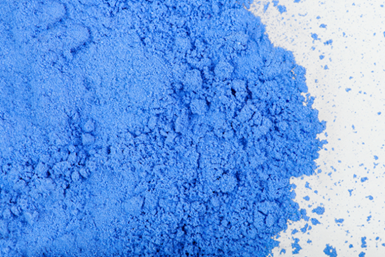Surface Preparation for Best Adhesion for Powder Coating
Kevin Biller with ChemQuest recommends the proper way to prepare a surface for powder coating that leads to excellent adhesion on 304SST.
#asktheexpert

Q: We currently are planning to use cold-rolled 304 Stainless square tubing for our instrument housings. The tubing comes slightly oxidized and slightly pitted. We are looking to provide the customer with a finish for the housing that looks professional and prevents it from going back to the way we received it. I believe that powder coating the product is the best way to finish it as a cost-effective means to protect the housing. The environment that the instrument will be in ranges from -40°C to +100°C and will occasionally be dusty, oily and near sea water but not emerged in it.
Given that the tubing is 304SST, adhesion is a problem. Can you recommend the proper way to prepare the surface? Please provide details on the best type of degreaser, grit (nonferrous) or chemical, and primer to use so UV and sea salt corrosion will not affect the housing for as long as 10 years.
A: It is wise to explore all options before committing to a new process. Powder coatings are an excellent finish for stainless steel if the process is designed and maintained properly. The key is in the cleaning and metal pretreatment process that precedes the application of powder.
Featured Content
The process you should consider for powder coating starts with media blasting. Aluminum oxide is a good choice. Follow the blasting with a well-controlled alkaline degreasing step to remove any residual oils, process fluids, and handling contaminants. It is also important to keep your blast media clean.
Next, I suggest a passivation step to remove any iron-based residues on the stainless surface as well as the possible presence of residual sulfides. Trace amounts of either contaminant can act as sites for subsequent corrosion. Passivation of stainless steel typically involves immersing the part in a nitric acid bath, although nitric acid/sodium dichromate or citric acid types of solution can also be used. The concentration of acid can range from 20% to 50% by volume. ASTM A380 describes standard practices for passivating stainless steel.
After thoroughly drying the parts, it is wise to powder coat the passivated surface as soon as possible. Chemically pretreated surfaces have a finite shelf life before they begin to degrade. Using a high-quality powder coating precludes the need for a primer coating.
To meet the durability required in the environments you describe, it is also essential to ensure that the powder coating is applied at a reasonable thickness as specified by the powder coating supplier. For an outdoor application, 3.0 to 4.0 mils are sufficient. It is also critical to ensure the parts receive enough temperature and time to completely cure the powder coating chemistry. When a powder supplier quotes a recommended bake, they are referring to the time at or above the stated temperature that the part has reached. So, it is important to factor in the heat-up time needed to reach the bake temperature.
As for ensuring acceptable coating performance in the field, prepare a few test pieces that have been run through the entire process (cleaning-passivation-coating-curing process) and perform the following tests:
- Simple “X” cross dry adhesion. Cut a 40 mm by 40 mm “X” into the coating with a fresh utility knife. Apply a strong tape such as 3M 250 or Permacel #99 and pull sharply. The coating should exhibit little or no loss of adhesion. A similar test can be done with a “crosshatch” device as described in ASTM D3359. This entails a perpendicular series of cuts that create a grid. I find that the simple “X” cut is usually sufficient to tell if the adhesion is acceptable.
- Hot water immersion adhesion. Place the samples evaluated in the adhesion test described in test 1 into a bath of 75°C (167°F) for 24 hours. Allow them to dry, then recheck for tape adhesion. Again, the coating should show little or no loss of adhesion.
- Back these test results up with a 500-hour salt fog test (ASTM B-117). Place scribed test parts in the corrosion chamber and evaluate every 250 hours. Most powder coatings pass 1,000 hours of salt fog resistance, but 500 hours is what I consider a minimum benchmark.
About the Author
Kevin Biller
Kevin Biller is the director of ChemQuest Powder Coating Research. Visit chemquest.com.
RELATED CONTENT
-
Proper Sieve Size for Powder Coating's Smooth Results
Kevin Biller at ChemQuest Powder Coating Research gives recommendations for sieve size to ensure surface smoothness.
-
Rework and Recoating Powder
Powder coating rework requires more than just recoating the part. Products Finishing columnist and powder coating consultant Rodger Talbert discusses proper steps that should be taken to ensure a quality finish.
-
Selecting the Right Outdoor-Durable Powder Coating
The powder coating industry offers an array of chemistries to provide an excellent match to the manufacturer’s expectations for outdoor durability.



















